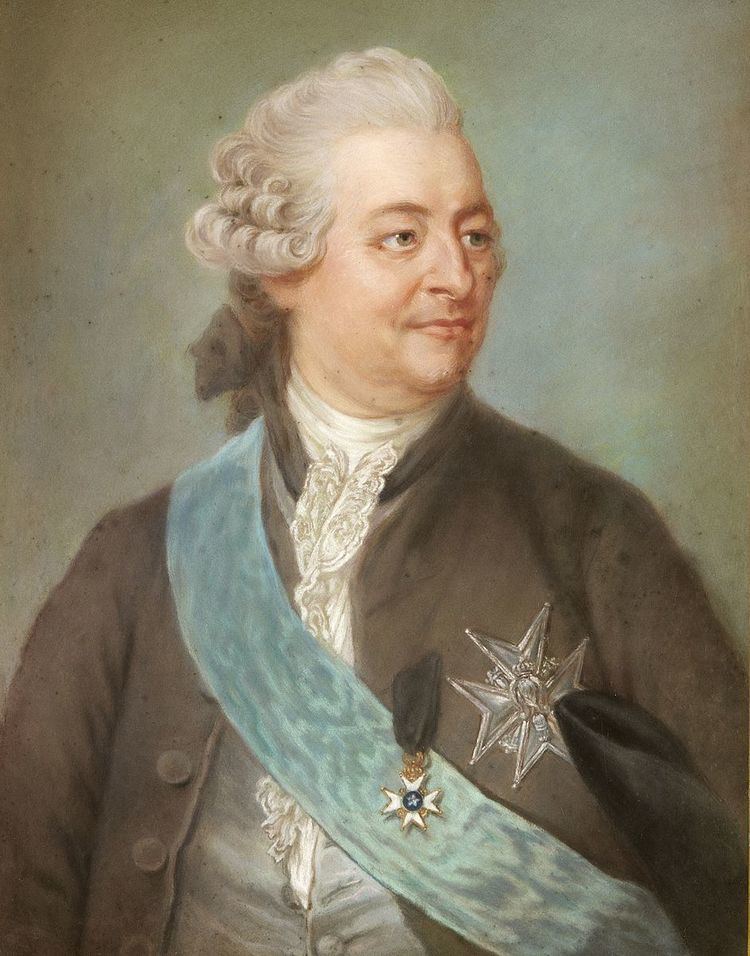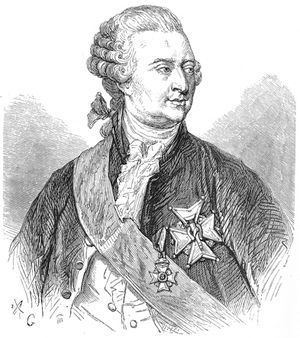Citizenship Swedish Education Utrecht University Role Entomologist | Name Charles Geer Nationality Swedish | |
 | ||
Born 30 January 1720
Finspang, Sweden ( 1720-01-30 ) Residence The Netherlands, Sweden Alma mater (tertiary education):
University of Utrecht (botanic) Died March 7, 1778, Stockholm, Sweden Spouse Charlotta Ribbing (m. 1743) Children Charlotte Du Rietz, Emanuel de Geer, Charles De Geer Grandchildren Carl De Geer, Vilhelmina Gyldenstolpe Fields Scientist, Business magnate | ||
Baron Charles de Geer (the family is usually known as De Geer with a capitalized "De"; Finspång in Risinge 30 January 1720 – Stockholm 7 March 1778) was a Swedish industrialist and entomologist.
Contents

Life
De Geer, who came from a family with strong Dutch connections, grew up in Utrecht from the age of three. He returned to Sweden at the age of 19. He had inherited the entailed manor and important iron-works of Leufsta (Lövsta) in Uppland from his childless uncle and namesake and would substantially increased the wealth of the estate.
Ever since he had received a present of some silk worms at the age of eight, he had an interest in entomology and became a respected amateur entomologist at an early age. His major work was the Mémoires pour servir à l'histoire des insectes (eight volumes, 1752-1778). He was elected a member of the Royal Swedish Academy of Sciences already in 1739, at the age of nineteen, and a corresponding member of the French Academy of Sciences in 1748.
He is buried with his spouse in Uppsala Cathedral. His collections of insects were donated to the Academy of Sciences and now belong to the Swedish Museum of Natural History in Stockholm. He left a library at Leufsta which, among other things, included the papers of Olaus Rudbeck and an important collection of 18th century sheet music. The Leufsta library was acquired by Uppsala University Library in 1986 after a donation by Katarina Crafoord (one of the daughters of Holger Crafoord, the founder of Gambro).
Achievements
De Geer was a great admirer of Réaumur. Hence his modelling Mémoires pour servir à l'histoire des insectes on Réaumur’s work of the same title. It, too, is in French, similarly in large quarto and with the same decorations. The Mémoires deal with 1,466 species, treating life histories, food and reproduction based on careful, patient investigation and analysis of existing literature. There are 238 copper plates. The descriptions are acutely observed.
In nomenclature De Geer was less progressive; Volume 1 of the Mémoires (1752) was too early to employ the binomial system invented by his fellow Swede Linnaeus. Volume 2 (1771) did not use it, but in Volumes 3 (1773) to Volume 7 (1778) the Linnean system was employed. However, for many species De Geer used two or more words for a specific name, such as Aphis betulae nigro punctata, these names were not binomial in the Linnean sense. He also proposed different names for many species which had previously been named and described by Linnaeus. It seems that using Linnean names was a concession to usage as in the 1760s and 1770s the Linnean system became increasingly employed, not because De Geer liked the new system. They had differences "not everyone sees things in the same light, and people have the weakness of frequently being too fond of their own opinions" (letter to Linnaeus 16 October 1772) and "if here and there I am still of a different opinion, I am now, as before, asking you not to take it amiss" (letter to Linnaeus 23 February 1774).
